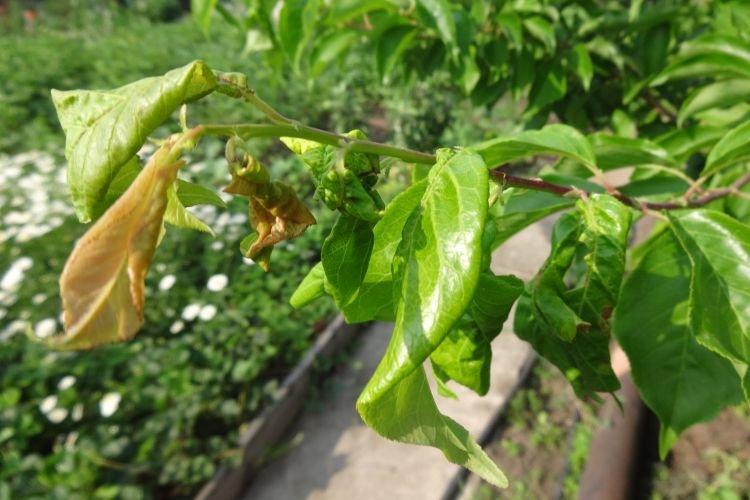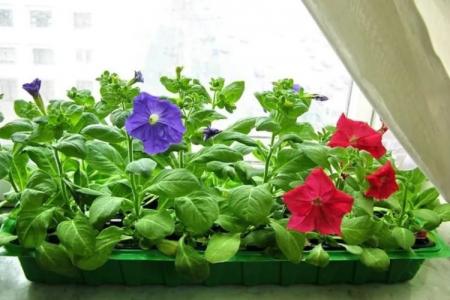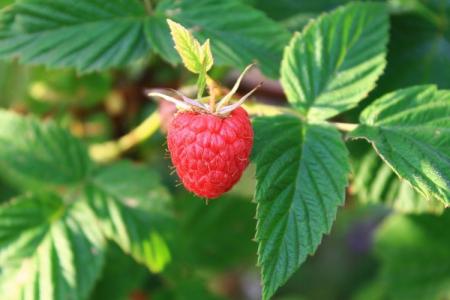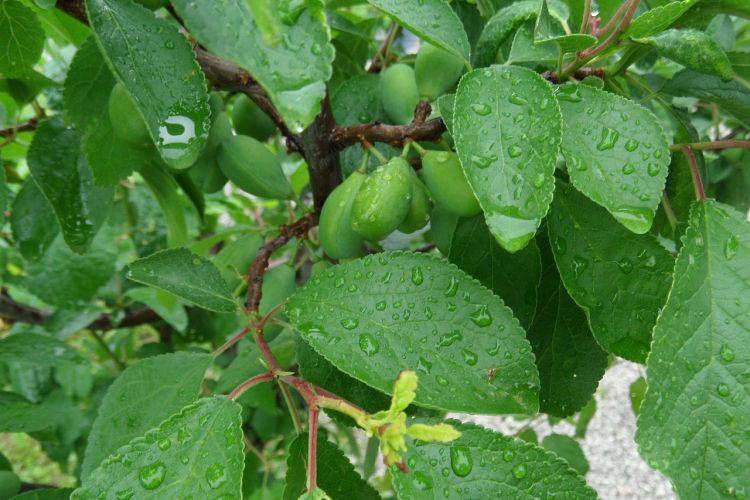
Healthy plums strengthen blood vessels, improve protein metabolism, help with heartburn and even stomach ulcers. Unfortunately, this does not mean that they cannot get sick themselves. The tree also suffers from viruses and infections. And most often gardeners are faced with leaf diseases!
Bumps and bumps on the leaves
Small growths and formations on the leaves can be for a variety of reasons: from commonplace parasites to serious tumors. Therefore, it is important to find out as soon as possible what the problem with the plum is!
- The tubercles on the leaves can be clutches of insects - aphids or scale insects;
- When infected with cytosporosis, the leaves and, to a greater extent, the bark are covered with small tubercles-ulcers;
- Bumps and blisters of a bright orange color on both sides of the leaf - a symptom of polystygmosis or red spot.
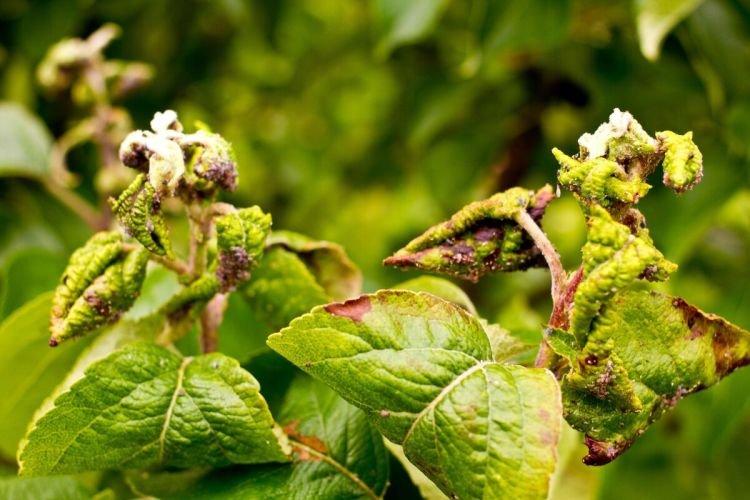
Leaves turn yellow and dry
The yellowness of plum leaves by fall is normal, but what if it happens during the high season? We tell you about the most common reasons!
- Due to a lack of moisture, plum leaves turn yellow and dry, and because of its excess, they turn yellow and rot;
- After rains, sunburn may remain in the sun, which is why it is not recommended to water and spray trees in the middle of the day;
- Chaotic yellow spots can be a sign of plumpox or sharki. They resemble curved lines, loops or rings;
- If yellow spots on the leaves are woven into one complex pattern, this is an incurable mosaic;
- Leaves eaten by pests also gradually turn yellow and shrink. Often gluttonous fruit mites or scale insects lead to this;
- Drying is a common problem of all stone fruits when agricultural technology is violated. Its reasons are the wrong choice of place and soil, lack of lighting or humidity, destructive pruning, neglected gum flow, frost.
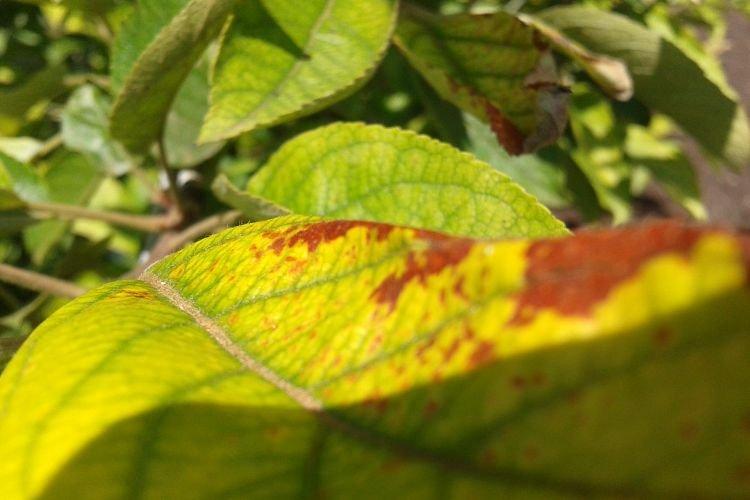
Brown spots on plum leaves
The most common cause of stains in all shades of red and brown is fungus. True, sometimes the problem is a deficiency of trace elements and violation of conditions of detention!
- Small spots of gray-brown color appear when the plum is infected with clasterosporium. Later, they have a raspberry border, and the spots may dry out and fall out;
- Due to monoliosis, young shoots with leaves and fruits wither and become brown. Rot gradually spreads along the drain;
- Bright red spots on the leaves between the veins appear due to rust. Sometimes bulging pads remain on the back;
- Small reddish specks on the outside of the leaves appear due to coccomycosis;
- Chaotic round spots that gradually turn into continuous "drips" and dry - a symptom of bacterial spotting;
- With septoria, whitish centers are clearly visible on brown spots, which is why the spot is called white;
- With improper care of the plum crown, marsoniasis appears. This is another fungus that covers the leaves with brown spots, but it is also successfully treated with fungicides;
- Although scab is considered a disease of apples and pears, all fruit crops suffer from it. Dark spots have an olive tint;
- Due to a deficiency of copper or iron, red, brown or purple spots appear on the leaves.
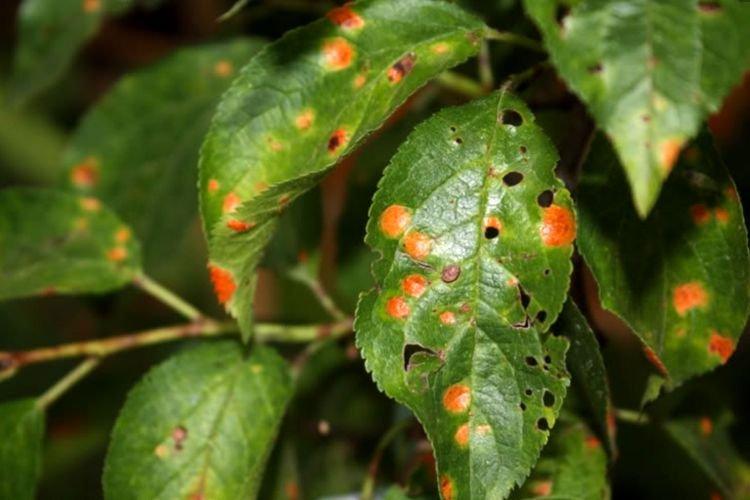
Plum leaves turn black
If the plum leaves are so dark that they begin to blacken, the root system is probably damaged. It can also be bacterial lesions or fungus.
- Chaotic, but small black spots leaves a brown spot. More precisely, at first the spots are colored yellow or brown, but gradually they are covered with black dots;
- Black sooty bloom covers plum leaves due to the sooty fungus of the same name;
- Black spots on leaves and shoots, resembling burns with ulcers - a terrible bacterial necrosis that can destroy a tree;
- In case of damage, decay or burns of the root system, the ground part also turns black and dies off.First of all, young and fragile shoots with leaves suffer.
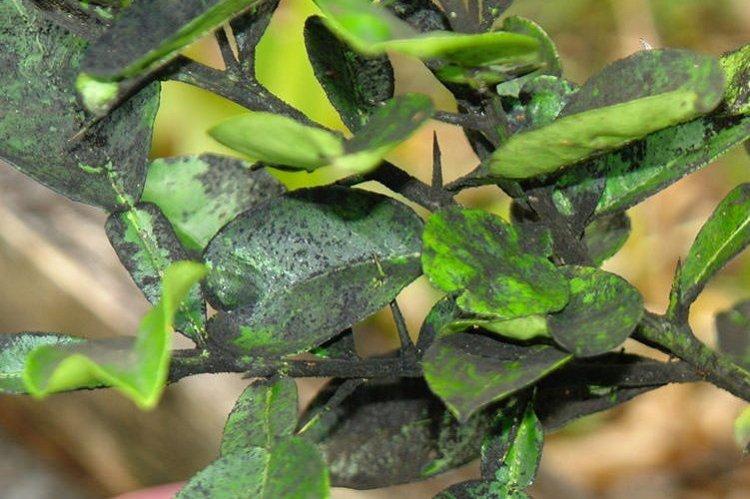
White bloom on plum leaves
White fleecy plaque is a spore of a fungus that multiplies in this way. Sometimes a thin sticky web left by pests can be mistaken for it.
- The most common garden problem is powdery mildew, which spreads quickly on wet days;
- Plum leaves seem to become silvery due to the milky sheen. Air voids appear in damaged plates;
- A spider mite and some types of caterpillars leave a whitish cobweb on the leaves.
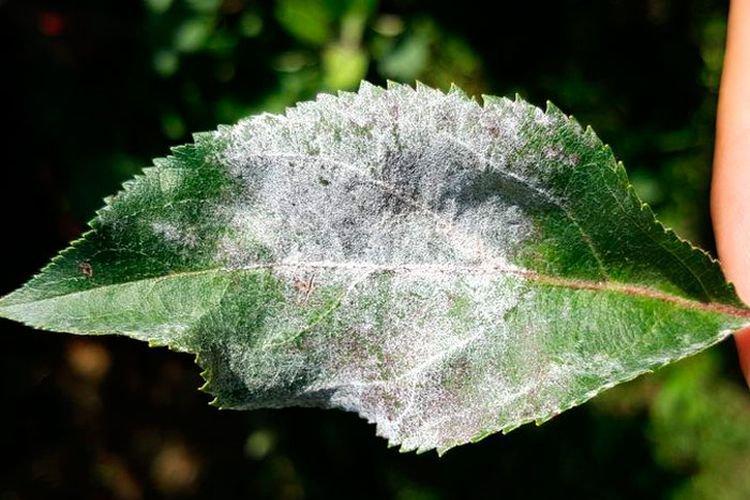
Pale and light leaves
Plum leaves fade and discolor if it suffers from improper care. Sometimes this is a signal that the soil around the tree is already too depleted!
- Leaves grow pale and stunted if the soil is too depleted and the plum lacks nutrition;
- With a deficit of the sun, the process of photosynthesis is disrupted, namely, the production of green pigment depends on it;
- If during the beginning of the growing season the plum lacked nitrogen, then the deciduous mass will also be pale and scarce.
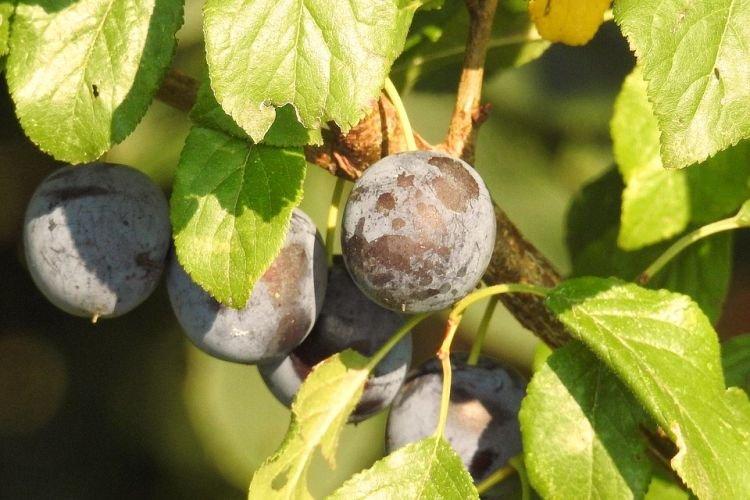
Leaves curling near the plum
Leaves deform, shrink into lumps and curl when the plum urgently tries to conserve resources. And periodically - caterpillars and other insects grow safely inside.
- Leafworms and other caterpillars willingly pupate in leaves rolled up in tubes;
- If you do not thin out the crown in time, then the leaves wrinkle, because they are cramped, there is not enough food and air;
- Plum dwarfism is a dangerous disease, in the early stages of which the leaves grow crooked, small, with an uneven edge;
- Due to the curliness, plum leaves curl, wrinkle and deform in every possible way. And also - they can change color to reddish!
